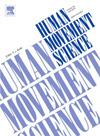Quiet Eye Training in Virtual Reality and in the Real-World
IF 1.9
3区 心理学
Q4 NEUROSCIENCES
引用次数: 0
Abstract
Virtual Reality (VR) may facilitate skill-learning in ways that have advantages over real-world training. QET was selected due to the wide implementation scope of training in VR, such as adaptive feedback and gaze cueing. Undergraduates who were novice to golf (N = 46) were randomly assigned into one of four conditions based on whether Quiet Eye Training (QET) was received or not, and whether subsequent golf putting practice occurred in the real-world (RW) or in VR. Participants had their golf putting performance and eye-gaze measured at baseline, post-training, and at a 1-week retention. Participants who received QET improved in their real-world putting performance, including number of putts holed and in radial error (distance between ball to hole) baseline-to-post, and baseline-to-retention, while their visuomotor behaviour was more similar to the expert. The performance improvement for QET participants was irrespective of whether they completed practice in VR or in the real-world. When putting in VR, participants who practiced their putting in the real-world (independent of training), improved in their radial error baseline-to-post and baseline-to-retention, while there was no improvement for participants who practiced in VR. The results suggest that QET may facilitate real-world golf putting performance improvement, irrespective of whether practice following the gaze training is conducted in VR or in the real-world. Further, real-world skills may transfer to VR environments, but that skills practiced in VR may need additional training to facilitate real-world performance improvement.
虚拟现实和现实世界中的静眼训练
虚拟现实(VR)可能以比现实世界的培训更有优势的方式促进技能学习。之所以选择QET,是因为在VR中训练的实施范围很广,如自适应反馈和凝视提示。根据是否接受静眼训练(QET),以及随后的高尔夫推杆练习是在现实世界(RW)还是在虚拟现实(VR)中进行,46名高尔夫新手本科生被随机分配到四种条件之一。研究人员在基线、训练后和1周内测量了参与者的高尔夫推杆表现和目光。接受QET治疗的参与者在现实世界中的推杆表现得到了改善,包括推杆入洞数、径向误差(球到洞之间的距离)、基线到柱和基线到保持力,而他们的视觉运动行为与专家更相似。QET参与者的表现改善与他们是在虚拟现实中还是在现实世界中完成练习无关。当使用VR时,在现实世界中练习推杆的参与者(独立于训练)在基线到杆和基线到保持的径向误差方面有所改善,而在VR中练习的参与者没有任何改善。结果表明,无论注视训练后的练习是在VR中进行还是在现实世界中进行,QET都可能促进现实世界高尔夫推杆成绩的提高。此外,现实世界的技能可能会转移到VR环境中,但在VR中练习的技能可能需要额外的培训,以促进现实世界的表现提高。
本文章由计算机程序翻译,如有差异,请以英文原文为准。
求助全文
约1分钟内获得全文
求助全文
来源期刊

Human Movement Science
医学-神经科学
CiteScore
3.80
自引率
4.80%
发文量
89
审稿时长
42 days
期刊介绍:
Human Movement Science provides a medium for publishing disciplinary and multidisciplinary studies on human movement. It brings together psychological, biomechanical and neurophysiological research on the control, organization and learning of human movement, including the perceptual support of movement. The overarching goal of the journal is to publish articles that help advance theoretical understanding of the control and organization of human movement, as well as changes therein as a function of development, learning and rehabilitation. The nature of the research reported may vary from fundamental theoretical or empirical studies to more applied studies in the fields of, for example, sport, dance and rehabilitation with the proviso that all studies have a distinct theoretical bearing. Also, reviews and meta-studies advancing the understanding of human movement are welcome.
These aims and scope imply that purely descriptive studies are not acceptable, while methodological articles are only acceptable if the methodology in question opens up new vistas in understanding the control and organization of human movement. The same holds for articles on exercise physiology, which in general are not supported, unless they speak to the control and organization of human movement. In general, it is required that the theoretical message of articles published in Human Movement Science is, to a certain extent, innovative and not dismissible as just "more of the same."
 求助内容:
求助内容: 应助结果提醒方式:
应助结果提醒方式:


